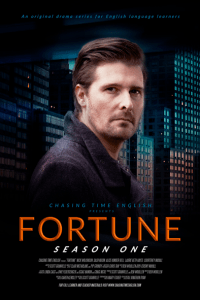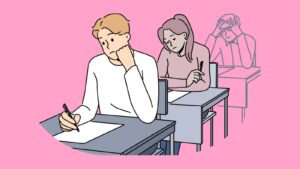By Scott Granville
Film and television shows have universal appeal as an entertainment source in popular culture.
Technology’s widespread influence makes online video content more accessible to English learners and teachers than ever before. Through this influence, there are lasting issues around materials creation using video. Authentic language forms used in dramatic television and film for English speakers are beneficial but only to a point. Particularly with learners at lower proficiency levels who may struggle with distractors such as overlapping speakers or unknown cultural context. Furthermore, creators design this form of content primarily for entertaining purposes rather than education. For English language teachers looking to create purposeful activities, it can be a time-consuming process even just to identify a suitable video, let alone create support materials. It was with these considerations in mind, and a decade of experience in language teaching and filmmaking that I began the process of writing a narrative drama series, Fortune, designed specifically for English language learners.
First draft – focus on narrative engagement
In the reasonably long yet sporadic history of film for teaching (Kelly, 1969, pp. 250-254), it seems that decisions about the language have usually come first, with the narrative developed merely as a way of presenting the language. The assumption appears to be that since viewers will be watching to learn, they won’t expect quality entertainment. However, such a view seems out of touch with modern learner expectations. Never before have learners had such ready access to everything from YouTube videos to Hollywood blockbusters, and we believe this has created an increasingly sophisticated and discerning consumer group. With this in mind, we chose to take the opposite approach, beginning with the design of an engaging video series, and then shaping it to fit the needs of teachers and learners. Thus, we decided to create a unique way of helping English language learners to study English through writing drama.
As Jamie Keddie reflects in Modern English Teacher (2017), “if we can immerse students in the narrative – language can become more meaningful.”
Along with series director Ben Woollen, we decided to use the popular detective drama genre for this project and began by framing a traditional story arc with strong, interesting characters that would populate the fictional world with twists, turns and suspense. With these elements in place, I then wrote a six-episode series, each episode designed to have a running time of approximately six minutes. Even in this early stage, we opted for episode lengths most conducive to learning and teaching opportunities.
Confirmation of learning purpose of writing the drama (grammar and functional interactions)
Now it was time to consider the learning purpose within each episode, and then begin to re-shape the series accordingly. It was important to keep returning to the motivation for creating the series – engaging learners with a dramatic story while incorporating language for materials creation both in classroom use and for self-study. The opening step was to identify grammar structures from the Common European Framework inventory. With a team of language teaching professionals, we made a decision to focus on two scenes in each episode and to modify the dialogue within these scenes at A2 and B2 levels. This would give us the necessary scope to later showcase learning opportunities across multiple proficiency levels.
We next identified scenes involving a useful communicative action. This included making requests, telephone calls, or a complaint in a service encounter. These scenes would provide a platform to create a rich variety of learning activities in the materials creation stage. We made a crucial decision not to emulate the standard approach to language education films, where multiple contrived uses of, say, the present perfect are hammered home, inevitably detracting from the storyline. Rather, we elected to provide additional supplementary videos so as not to compromise the entertainment value.
Rewriting dialogue and situations to match learning/teaching focus
Armed with these language choices, I returned to the original scripts. This was an exciting period as the connection between the narrative and learning opportunities came into focus. The second draft required several steps to ensure meeting the standards required at each level.
First, I had to embed grammar modifications to the highlighted scenes without losing the natural flow of authentic interaction. Multiple rewrites were necessary for this challenging process, proving crucial for establishing consistent language benchmarks during production.
The second step was to review the vocabulary used in the first draft of the script. This required consideration of language at word and sentence level based on our anticipated audience across two levels. Here, the decision was made to maintain existing words and phrases that would be considered ‘stretch’ vocabulary, but only if they could be purposefully used in teaching and learning activities.
Workshop with drama actors
It was now time for the nerve-wracking transition from page to action. Actors (at least the good ones!) naturally have a very good understanding of how words can be manipulated with action to deliver a believable message.
One of the key challenges was to resolve the tension between:
a) the demand for comprehensibility and
b) preserving an authentic delivery style.
We collaborated with the core cast, director, script supervisor, and production members in roundtable workshops, analyzing the script and dialogue. We also broke down audio recording dialogues and then reviewing the pacing, tone and delivery of lines. This was time well-spent as we needed to find a balance between acknowledging English language learners, without losing dramatic effect. After all this, we arrived at a place where the scripts met our objectives from a narrative and pedagogical standpoint. We were ready to begin production!
Conclusion
 Scripting material for video is only the beginning of the production and materials creation process. There were many more steps before the Fortune series was finalised: a completed narrative drama series with supporting teaching and learning materials for English language learners. Our team consisted of over fifty individuals, each person playing a crucial role in the overall success of a multi-layered project. What was important, even at the early stages, was the to remain focused on the goal of creating engaging video content with a strong learner focus.
Scripting material for video is only the beginning of the production and materials creation process. There were many more steps before the Fortune series was finalised: a completed narrative drama series with supporting teaching and learning materials for English language learners. Our team consisted of over fifty individuals, each person playing a crucial role in the overall success of a multi-layered project. What was important, even at the early stages, was the to remain focused on the goal of creating engaging video content with a strong learner focus.
What are your experiences of using narrative drama as teaching resources in the English language classroom? I would be interested in hearing your feedback about writing drama for English language learners.
References:
- Kelly, L. G. (1969). 25 centuries of language teaching. Rowley, MA: Newbury House.
Title image: https://www.woodenearth.com/




